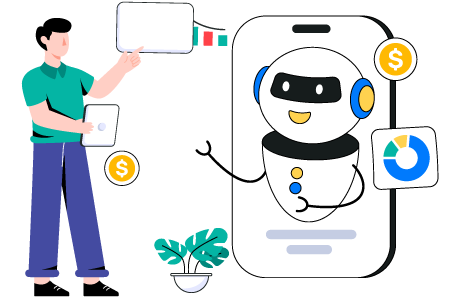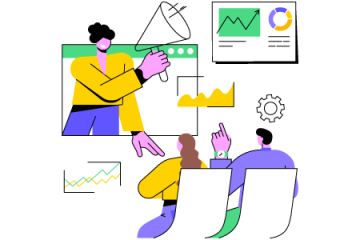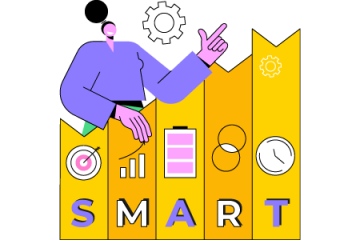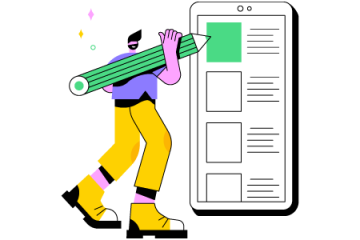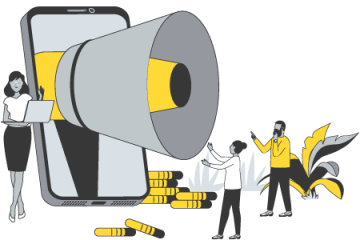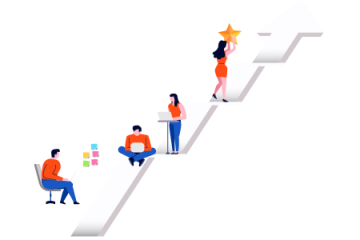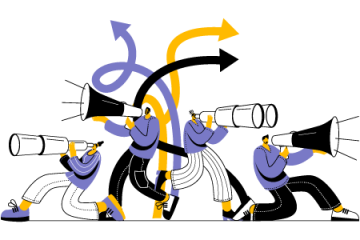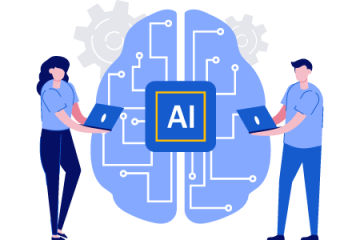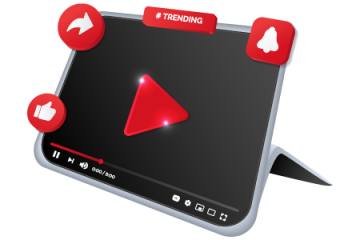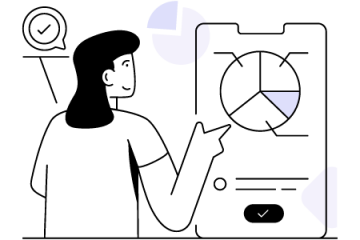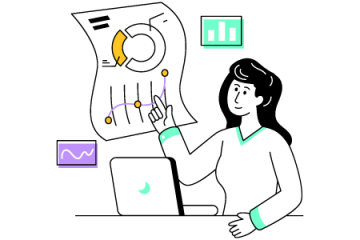In this current digital era technology has played a very important role. Especially during the time of COVID-19, everything worked digitally. In this blog, we will talk about why it's important to teach students about digital literacy and how teaching digital literacy to students in 2023 can have an impact.
What Is Digital Literacy?
Digital literacy means how we can use, create, share and even make new content through the use of technology and the internet. It is completely different from going physically to schools and colleges to learn because digital literacy includes learning everything virtually.
In 2023, when students learn about digital stuff, they should learn skills that can be useful for technologies we don't even know about yet. Also, they should keep learning about new technologies that we do know about. This helps them be ready for the future and things we might not even imagine right now.
Importance of Adapting Digital Literacy Curriculum
Preparing for an Evolving World
Having knowledge about digital literacy and technology is very important because the current generation is the future of change and they need to be updated about what is going on, especially when it's a world revolving around technology. Digital literacy helps the student to prepare for the change, develop the skills and have a strong foundation from the very start.
Staying Ahead of Technological Shifts
Updating the digital literacy curriculum ensures that students are not only updated with current technologies but also prepared for upcoming advancements. This helps them to be updated about the change and be prepared to develop their skills and abilities accordingly. This gives more chances to develop better technological advancements in the future.
Critical Thinking and Problem-Solving
Due to digital literacy, students can develop critical thinking skills through which they can solve difficult problems by using digital tools. It also helps the students to see and analyse information from both positive and negative perspectives which is very important for a better digital future.
Promoting Digital Citizenship
Updating the curriculum plays a very important role in teaching students how to be responsible digital citizens. They gain knowledge about things like how to behave well online, respect others' privacy, understand online rules, and stay safe from online risks. This helps create a friendly and secure online space where everyone can interact with respect and safety.
Empowering Creativity and Innovation
The digital literacy curriculum encourages creativity and innovation in students. There is a lot of personal experience in this because what happens is when we start using digital tools, we are slowly able to explore our creativity and learn what we're good at. We gain the confidence to experiment, collaborate, and create new content which helps us in contributing towards our personal growth and future career prospects.
Enhancing Career Readiness
Adopting digital literacy also means many students can get jobs in the future that secure their future. We can take examples of digital marketing itself and how it has been able to provide job opportunities for a lot of people and how they are earning well through this field. Nowadays, nearly 80% of students are seen doing internships or working part-time in the Digital Marketing sector.
Connecting and Working Together
Digital literacy helps people communicate and work together better. With digital tools and the internet, students can talk and work with each other even if they're far away. This helps them learn together by working on projects and even sharing what they know and giving each other advice.
Digital Literacy Curriculum
Defining Learning Objectives
Establish clear and measurable learning objectives that define what students should know and be able to do in terms of digital literacy. The first step is that teachers need to be able to explain to the students about digital literacy and what its main object is so that the children would at least know why they are reading this.
Age-Appropriate Content
When children are studying digital literacy in school, they should be provided and taught with content that is appropriate for their age. This helps kids avoid technology and internet abuse as well as cybercrime.
Core Digital Skills
When designing a digital literacy curriculum, it's important to focus on the essential digital skills that students need to acquire for success in the digital era. These skills should include internet safety, which teaches students how to navigate online spaces securely, guarding against potential risks. Even digital problem-solving equips them with the ability to troubleshoot technical issues and navigate digital conflicts, empowering them to use technology wisely and confidently in a responsible and informed manner.
Technology Integration
The school should also be prepared about the kind of technology that should be used for the curriculum such as computer laptops and order online resources that are available. Digital literacy in schools needs to be integrated with the elementary curriculum to make the learning process easier for students and learn early.
Interactive Learning
To make learning about digital skills more engaging and effective, it's important to include activities where students can get directly involved. This means they don't just read about it or listen to a teacher; they do it themselves. For example, instead of only discussing internet safety, students might practice safe online behaviour in a controlled environment. This hands-on approach helps them understand and remember these digital skills better because they're actively using them, reinforcing their understanding through practical experience.
Multimedia Resources
When teaching digital literacy, it's important to use different types of materials to help students understand better. These materials can include things like videos, interactive lessons (where they can click and learn), and online quizzes. The idea is to use various resources to match how different students like to learn. Some may prefer watching videos, while others like to interact with lessons or take quizzes. By using different materials, we cater to the different ways students learn best.
Critical Thinking and Evaluation
This is all about teaching students how to think carefully and assess the information they find online. It's like teaching them to be detectives. They learn how to figure out if something they read online is trustworthy and true, or if it might be false or misleading. This skill is vital in today's world because there's so much information on the internet, and not all of it is accurate. So, we want students to be smart about what they believe and use online.
Cybersecurity Education
In this part of the curriculum, students learn how to stay safe on the internet. They discover how to protect their personal information, recognize and avoid online scams, and stay away from things that could harm their computers or devices.
Ethical Use of Technology
This is about teaching students how to use technology in the right way. They learn about being good digital citizens, which means being respectful and responsible when using the internet. This includes not copying other people's work (plagiarism), respecting other people's privacy, and using technology in a way that's fair and kind to others. It's like teaching them the rules of being a good neighbour but in the digital neighbourhood.
Adaptability and Updates
In the ever-changing world of technology, it's important that the curriculum can change too. This means being flexible and ready to update what students learn as technology evolves. Just like we update our smartphones or computers to get the latest features, the curriculum needs to adapt to new digital trends. This ensures that students are always learning relevant and up-to-date information in the fast-paced digital world.
Assessment Strategies
When we talk about assessment, we mean figuring out how well students are learning. So, we use different methods like quizzes (which are like little tests), projects (where students work on something interesting), and performance-based evaluations (which are like watching how well they can do something). This helps us see if they're getting good at digital skills.
Teacher Training
This part is about helping teachers learn how to teach digital skills well. Just like students need to learn, teachers also need to learn how to teach digital stuff effectively. The importance of digital literacy for teachers lies in the fact that you can't teach something you're not familiar with, so they go to training sessions to get better at it.
Parent Involvement
Parents are like partners in this learning adventure. Digital literacy for parents is as important as for teachers so we want to get them involved, too. So, we share resources and advice with parents to help them help their children learn digital skills. Similar to how parents indulge in child development activities in the real world, it is necessary in the digital world as well. It's like giving parents a map so they can support their kids on this digital learning journey.
Real-World Applications
Learning isn't just about knowing things; it's also about using what you learn in the real world. So, we teach students digital skills by showing them how these skills are useful in everyday life and future jobs. It's like learning to cook by actually making delicious meals, not just reading recipes. This way, students see why digital skills matter beyond the classroom.
Promoting Digital Literacy Among Students
Guiding Information Evaluation
Along with digital literacy, it is very important to teach the students that the website they are using is not misleading and that they should know how to assess the credibility of online information. Students should be able to distinguish between right and wrong sites and even teachers need to guide the students accordingly.
Navigating Online Privacy
Students should be taught about using passwords and securing their privacy. They should be taught about the importance of personal information and why it should not be shared. They should always remember to log out from unknown devices after using them.
Cultivating Online Etiquette
Students should be aware of the kind of images or text that should be used online because there are a lot of things that we, as a student, may end up doing unknowingly and don't end up looking at bullying, abuse or any form of offensive behaviour. Students should be encouraged to use digital tools and technology with a positive mindset. Certain activities can help children learn online culture and etiquette.
Mastering Digital Writing
Teachers must help students understand the difference between writing in the usual way and creating things for the internet so that they don't get mixed up. Teach them how to do things like adding links and references changing how they write based on who will read it, picking and using pictures, and more. Just like you learned that personal essays are not the same as research papers, it's important to show how writing a post on Instagram is different from writing a blog or an article for a magazine online.
The process of writing for different subjects requires different specialized techniques. So, experts from CDR Report Writer suggest mastering digital writing skills for specialized writing.
Exploring AI Tools and Academic Integrity
Students should be able to explore different kinds of AI so that along with getting the work done they are also getting the opportunity to learn and explore more things.
Nurturing Digital Literacy: Courses and Subjects in Schools
Computer Science
Course Description: Computer Science courses cover topics like programming, algorithms, and computer hardware.
How It Helps: These courses provide a foundational understanding of how computers work and introduce students to coding, problem-solving, and logical thinking.
Information Technology (IT) or ICT
Course Description: Information Technology or ICT courses focus on computer applications, software, and digital tools.
How It Helps: Students learn practical skills like using office software, internet research, and data analysis, which are essential for daily life and future careers.
Digital Citizenship
Course Description: Digital Citizenship classes teach responsible and ethical use of digital technologies.
How It Helps: Students learn about online safety, cyberbullying prevention, and how to be responsible digital citizens, fostering a positive online presence.
Web Development and Design
Course Description: These courses teach students how to design, create and maintain websites.
How It Helps: Students acquire practical skills in coding (HTML, CSS, JavaScript) and design principles, enabling them to build and manage digital platforms.
Data Science and Analytics
Course Description: Data Science courses introduce students to data collection, analysis, and visualization.
How It Helps: Students learn how to make data-driven decisions, a crucial skill in various fields like business, healthcare, and research.
Coding Clubs and Extracurricular Activities
Course Description: Many schools offer coding clubs and extracurricular activities focused on digital literacy.
How It Helps: These clubs encourage students to explore coding and technology in a fun and collaborative environment, fostering a love for digital skills.
Multimedia Production
Course Description: Multimedia courses teach students how to create digital content, including videos, animations, and podcasts.
How It Helps: Students gain hands-on experience in digital media creation, enhancing their communication skills in the digital realm.
E-learning and Online Resources
Description: Some schools integrate e-learning platforms and online resources into their curriculum.
How It Helps: Students become familiar with online tools and platforms, preparing them for distance learning and remote work environments.
Conclusion
Overall, teaching digital literacy to students is very important because technology is shaping the world we live in today. Students need to be aware of the change that is taking place and be updated about all this new technology and digital world not just to learn new things but also to secure their future. If you're looking for more interesting blogs, then stay updated on our page.
FAQs
1. What is the importance of digital literacy for students?
Digital literacy means knowing how to use technology and the internet wisely. It's important because it helps students learn, communicate, and stay safe online. Just like reading and writing, digital skills are must have to ensure success in a world that is changing rapidly.
2. How can students become digitally literate?
Teach them about privacy, like keeping personal info safe. Encourage good behaviour online and how to communicate kindly. Also, introduce them to useful online tools for learning and creating.
3. What kind of skills do students need for digital literacy?
Students need skills like finding trustworthy information online, understanding privacy settings, using email and messaging, and using software for writing and creating. They should also know how to spot fake news and be respectful when talking online.
4. How can I teach digital literacy without being a tech expert?
You don't need to be a tech whiz!
Start with simple things like searching online or using email. Look for digital resources designed for teaching digital skills to students.
5. What are some fun ways to teach digital literacy?
You can use online games that teach coding or internet safety. Have students create digital projects like making videos or designing graphics. Making learning digital skills enjoyable can make it more exciting for students.
